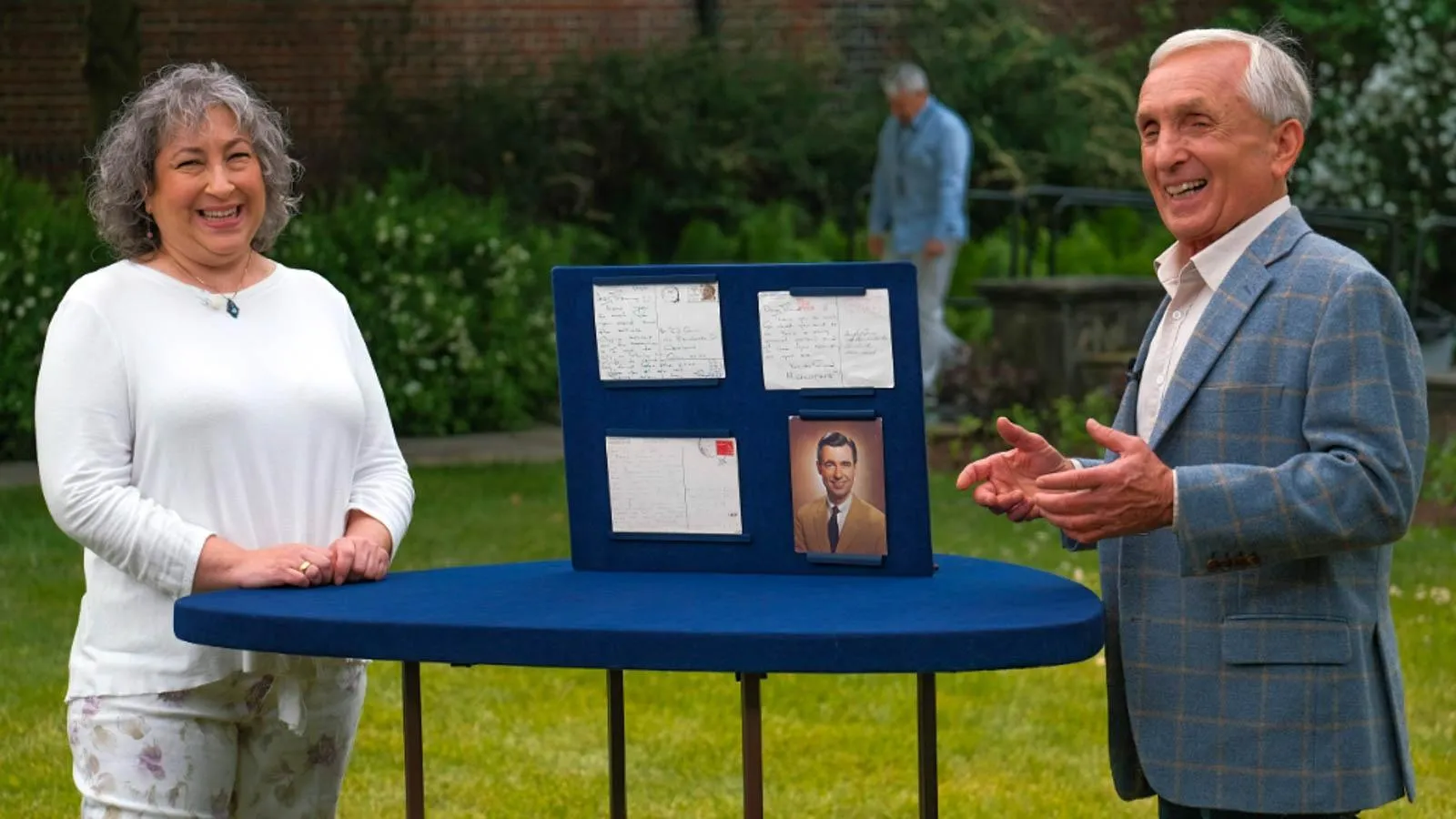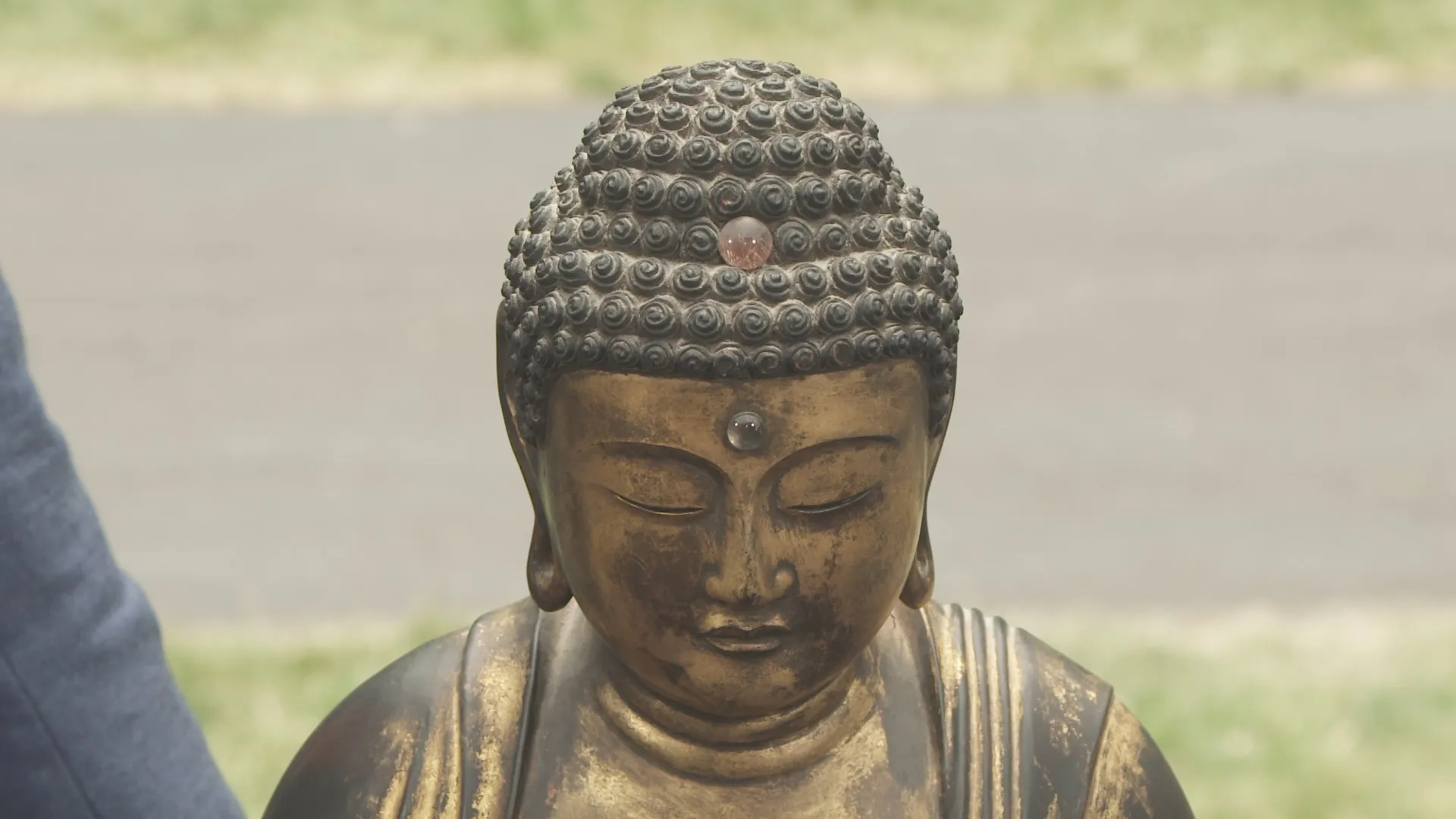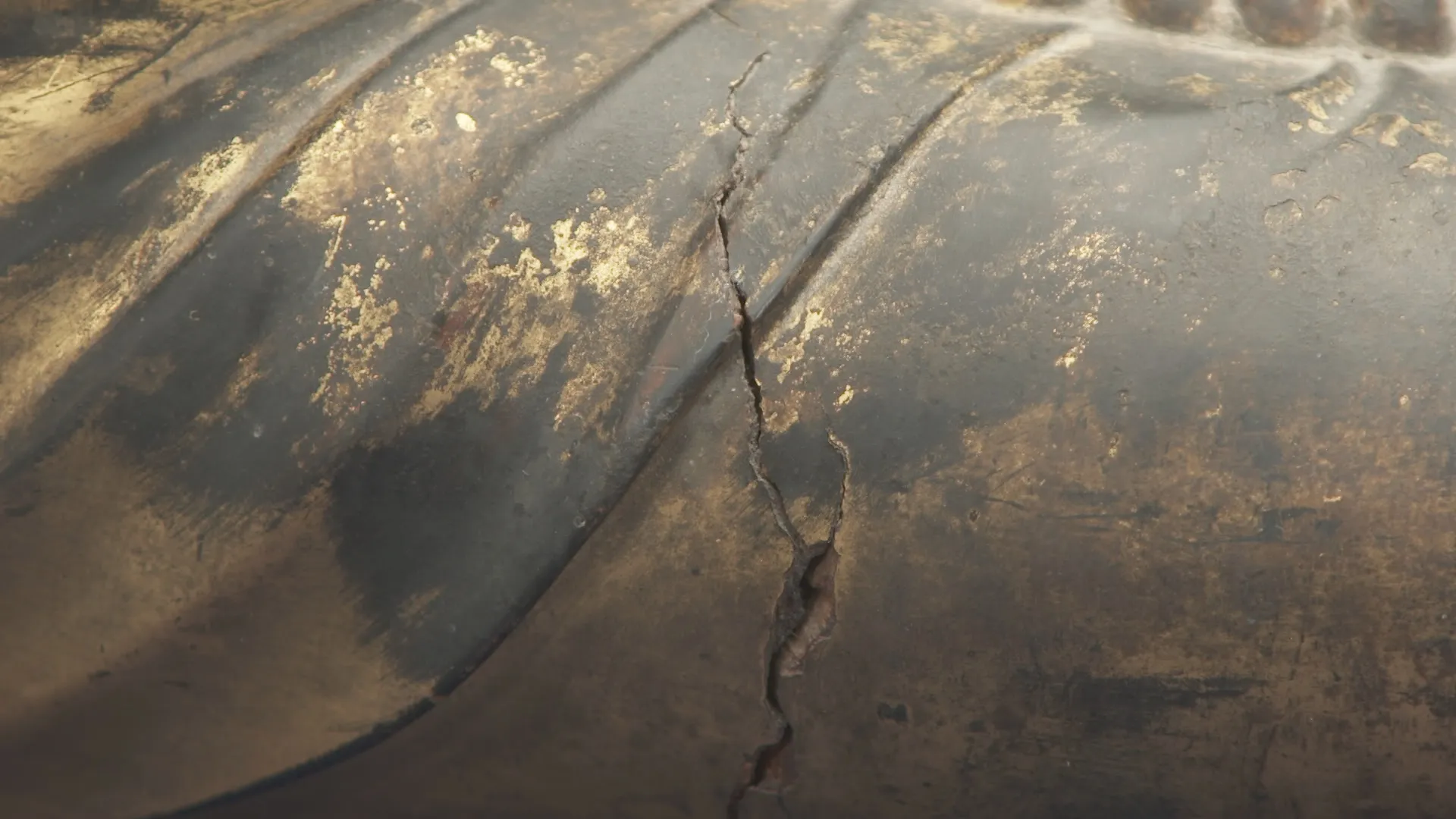GUEST: So I brought an Amida Buddha, which I believe is from the Edo period. My husband's great-grandparents brought it over from Japan in 1917. When his grandfather passed away in 2000, we obtained it, and we've been having him sitting in our dining room facing east for 23...
APPRAISER: Very good.
GUEST: (laughing) For 23 years.
APPRAISER: (laughs) Nice. You are absolutely correct in all the things
that you do know.
GUEST: Oh, okay.
APPRAISER: But I wonder if there's a few things maybe I can, I can help...
GUEST: Yeah, please.
APPRAISER: ...and, uh, provide a little enlightenment of my own. Although this is a paragon of enlightenment, naturally. The Amida Buddha, specifically very revered in Japan, is the Buddha of, of everlasting life and all-encompassing light.
GUEST: Mm-hmm.
APPRAISER: And so it's a tremendous sort of image in, in a home shrine or in a shrine in the community, to see this image of the Buddha. Even though this is not one of the more ornate Buddhas…
GUEST: Mm-hmm.
APPRAISER: ...I can illustrate that this Buddha's hand gesture is one of, of serenity peace, and contemplation. The clarity of the vision of the third eye here…
GUEST: Mm-hmm.
APPRAISER: ...is, is really sort of exemplified in the, this fine piece of rock crystal, which is, which is set. So this dates from the early part of the 18th century in Japan, and it's very, very typical of Edo period wood carvings. It's, it's lacquered and then gilded. So this is gilt lacquer on wood. Your Buddha is showing a little bit of age, naturally, and that's to be expected.
GUEST: Mm-hmm, yeah.
APPRAISER: But I think that actually lends to the, to the overall majesty of the, of the carving. When we try to, to age the, the objects that we see, there's… We looked at, are the, are the wear patterns consistent with genuine wear, or has it been tinkered with a little bit?
GUEST: Sure.
APPRAISER: But I think here, you see it's in the right place, which is a good thing.
A little bit of cracking to the lacquer.
GUEST: Yeah.
APPRAISER: A little bit of cracking to the wood. Wouldn't worry about it, all right?
GUEST: Okay.
APPRAISER: Now, you've learned a great deal, and you've honored and loved this for a while, but there's a little secret within that I bet you don't know.
GUEST: I don't know any secrets about it.
APPRAISER: 'Cause it...(laughs) (chuckling) Well, I… I'll give you a clue, and I'll be gentle in doing this.
GUEST: Okay.
APPRAISER: But I wonder if you've ever come to realize...
(statue rattling)
GUEST: Oh, yes, I have heard that, yes.
APPRAISER: Okay. Before these Buddhas were placed in their respective shrines...
GUEST: Mm-hmm.
APPRAISER: And this is not just a Japanese custom, but one throughout the, the, the East Asian Buddhist world, they were consecrated, and to consecrate these was to take prayer scrolls and to insert them into the cavity of the Buddha.
GUEST: (gasps softly)
APPRAISER: Now, if this were from some particular nations, we would find a, a hatch, sort of a "trap door" on the back, where it had been placed.
GUEST: Uh-huh.
APPRAISER: Not so here.
GUEST: Okay.
APPRAISER: We looked at it, my colleagues and I, and what we came to discover, there's actually a, a little door in here. (laughs) Did you, have you ever noticed this sort of woven fabric that's put over?
GUEST: Oh, yeah.
APPRAISER: Can you feel the, the texture on that?
GUEST: Yeah.
APPRAISER: And then it's lacquered over? That's kind of sealing off the, the cavity.
GUEST: Oh, okay.
APPRAISER: And so, it's not worth busting it open. I wouldn't dare do that. No, no, no, no-- no. But there would be, I think that little rattle...
GUEST: Ah.
APPRAISER: ...is a prayer scroll that is inside.
GUEST: Oh, wow.
APPRAISER: So, meaning that it is fully intact, and… (chuckles) ... fully sort of ready to fulfill its purpose.
GUEST: Oh, wow.
APPRAISER: You know, inspiring those in Japan, and I might say
probably inspiring you a little bit in your home.
GUEST: Yeah, absolutely, yes.
APPRAISER: It being of considerable age, considerably good quality, and just of striking appearance, I think at auction today, I would place what is perhaps a conservative auction estimate of $3,000 to $5,000.
GUEST: Oh, wow, that's great. (laughs)
APPRAISER: Thank you so much for bringing it in.
GUEST: Thank you. We love it. (chuckles)













